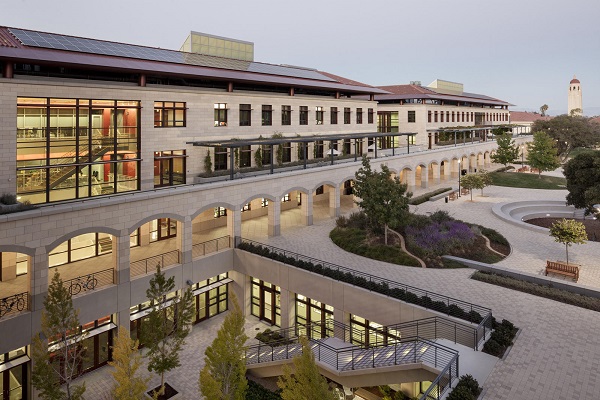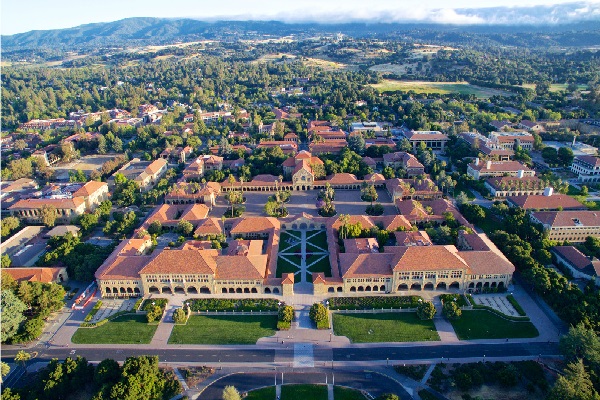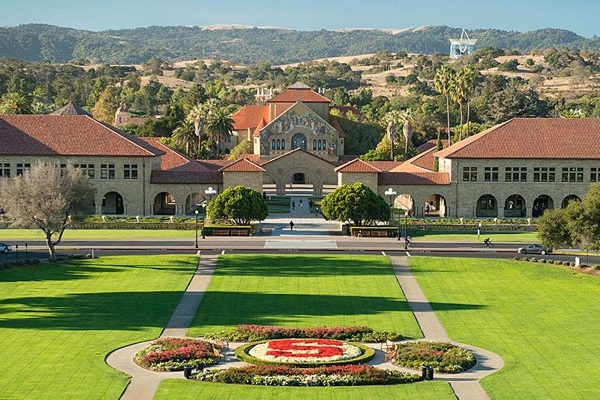University Rankings
- QS World University Rankings 3
- Times Higher Education World University Rankings 4
- Academic Ranking of World Universities 2
- QS Sustainability Ranking 33




1. Overview and History
Founded in 1885 by Leland and Jane Stanford in memory of their only child, Leland Stanford Jr., Stanford University opened its doors in 1891. Initially envisioned as a coeducational and non-denominational institution, the university quickly gained prominence for its strong emphasis on practical application and its contributions to the burgeoning fields of engineering and technology. Throughout the 20th century, Stanford expanded its academic offerings and research endeavors, becoming a leader in disciplines ranging from the humanities and social sciences to medicine and law. Its close ties to Silicon Valley have fostered a culture of innovation and entrepreneurship, contributing significantly to the region’s technological advancements.
2. Campus and Facilities
Stanford’s sprawling 8,180-acre campus features a mix of Romanesque and Mission Revival architecture, creating a visually stunning environment for learning and research. The university boasts state-of-the-art facilities, including world-class libraries, cutting-edge laboratories, performance venues, art museums, and athletic facilities. Students have access to extensive computing resources, specialized research centers, and makerspaces that encourage hands-on learning and experimentation. The Cantor Arts Center houses a significant collection of artworks, while the Anderson Collection at Stanford University focuses on post-WWII American art. The campus also offers a variety of dining options, student residences, and recreational spaces.
3. Academic Programs
Stanford offers a wide range of undergraduate and graduate programs across seven schools: Humanities and Sciences, Earth, Energy & Environmental Sciences, Engineering, Education, Business, Law, and Medicine. Each school offers a diverse array of majors, minors, and interdisciplinary programs, allowing students to tailor their education to their interests. Stanford’s faculty includes renowned scholars, Nobel laureates, and industry leaders, providing students with unparalleled learning opportunities. The university emphasizes a liberal arts foundation, encouraging students to explore different fields and develop critical thinking skills.
4. Research and Innovation
Stanford is a global leader in research and innovation, making significant contributions across various disciplines. Its faculty and students are engaged in cutting-edge research in areas such as artificial intelligence, biomedicine, energy sustainability, and social impact. The university has a strong track record of translating research discoveries into real-world applications, fostering entrepreneurship and contributing to economic growth. Stanford’s proximity to Silicon Valley facilitates collaborations with industry partners, creating opportunities for students and faculty to engage in impactful research projects.
5. Internationalization
Stanford has a strong international presence, attracting students and scholars from around the world. The university offers a variety of study abroad programs, international research opportunities, and global initiatives that promote cross-cultural understanding. Stanford’s commitment to diversity and global engagement enriches the campus community and prepares students for leadership roles in an increasingly interconnected world.
6. Student Life
Stanford offers a vibrant student life with a diverse range of extracurricular activities. Students can participate in over 650 student organizations, including cultural groups, athletic teams, performing arts ensembles, and community service initiatives. The university’s residential system fosters a strong sense of community, providing students with opportunities to connect with peers from diverse backgrounds. Stanford also hosts numerous events and lectures throughout the year, bringing prominent speakers and performers to campus.
7. Admissions and Tuition
Admission to Stanford is highly selective, with a low acceptance rate. Applicants are evaluated based on academic achievement, standardized test scores, extracurricular activities, essays, and letters of recommendation. Tuition fees are substantial, but the university offers a generous financial aid program to support students from diverse socioeconomic backgrounds.
8. Notable Alumni and Achievements
Array
College Affiliation
News & Updates
 Transform Your Career: The Open University’s Flexible Path to Lifelong Learning
Transform Your Career: The Open University’s Flexible Path to Lifelong Learningby Piyush Chauhan
December 14, 2025
 Achieving Excellence: Harvard’s Practical Strategies for Personal and Professional Growth
Achieving Excellence: Harvard’s Practical Strategies for Personal and Professional Growthby Piyush Chauhan
December 14, 2025
 Thriving Online: Discovering Liberty University’s Community and Flexible Learning Programs
Thriving Online: Discovering Liberty University’s Community and Flexible Learning Programsby Piyush Chauhan
December 14, 2025
 Unlocking Innovation: How Stanford Research Shapes Tomorrow’s World and Your Future
Unlocking Innovation: How Stanford Research Shapes Tomorrow’s World and Your Futureby Piyush Chauhan
December 14, 2025
 UCL’s Groundbreaking Discoveries: Advancing Global Health Through Interdisciplinary Research
UCL’s Groundbreaking Discoveries: Advancing Global Health Through Interdisciplinary Researchby Piyush Chauhan
December 13, 2025
Courses & Fees
| Course Name | Duration | Fees (in ₹) |
|---|---|---|
| Computer Science (MS) | 2 years | 65,00,000 |
| Master of Business Administration (MBA) | 2 years | 80,00,000 |
| Mechanical Engineering (MS) | 2 years | 70,00,000 |
Frequently Asked Questions
Stanford's acceptance rate is extremely competitive, typically around 4-5%.
The application deadlines are typically in early November for Restrictive Early Action and early January for Regular Decision.
Yes, Stanford offers need-based financial aid to international students.
The student-to-faculty ratio is approximately 5:1, ensuring personalized attention and mentorship.
Stanford's campus culture is known for its academic rigor, entrepreneurial spirit, and collaborative environment. Students are encouraged to pursue their passions and contribute to the university community.
Video Highlights

Stanford University
